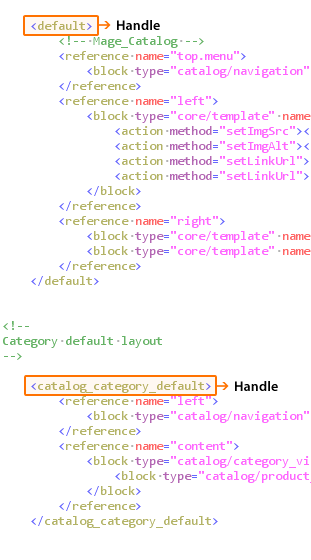Layout of your custom controller in Magento?

When you work with custom (your own) controllers in Magento,
either frontend or backend, you will probably also use existing blocks and models or if needed write your own classes.
But what happens if you want to or have exigency to move/remove common blocks?
Can you really “design” your own page view without touching Cascading Style Sheets?
Acctually, yes you can, as a matter of fact on a pretty easy way.
All you need to know the handles of your controllers.
You know what handles are, right ?
To get handle of your controller, you will need some debugging techniques.
In action of your controller insert line:
Zend_Debug::dump($this->getLayout()->getUpdate()->getHandles());It works for admin and frontend cotrollers in a same way.
And your custom action will look something like this:
public function indexAction()
{
$this->loadLayout();
$this->renderLayout();
Zend_Debug::dump($this->getLayout()->getUpdate()->getHandles());
}In your browsers output you will get something like this:
Frontend controller
array(5) {
[0] => string(7) "default"
[1] => string(13) "STORE_default"
[2] => string(29) "THEME_frontend_default_hybrid"
[3] => string(29) "inchoo_developers_index_index"
[4] => string(19) "customer_logged_out"
}Admin controller:
array(4) {
[0] => string(7) "default"
[1] => string(11) "STORE_admin"
[2] => string(30) "THEME_adminhtml_default_inchoo"
[3] => string(28) "adminhtml_switch_index_index"
}You need value of 4th key of an arrays.
Frontend:
[3] => string(29) "inchoo_developers_index_index"Admin:
[3] => string(28) "adminhtml_switch_index_index"Now, when you know the handles you can start working with your layout xml files.
All you need is to create “local.xml” file in layout folder of your theme (frontend or admin) and do the updates.
In my, simple, example I have removed headers and footers on both, frontend and admin controllers.
Frontend example:
file: app/design/frontend/default/default/layout/local.xml
< ?xml version="1.0"?>
<!-- /** * Magento * * @category Inchoo * @package Inchoo_Developers * @author Vedran Subotic - vedran@inchoo.net */ -->
Admin example:
file: app/design/adminhtml/default/default/layout/local.xml
< ?xml version="1.0"?>
<!-- /** * Magento * * @category Inchoo * @package Inchoo_Developers * @author Vedran Subotic - vedran@inchoo.net */ -->
My working example can see and download:
Inchoo Developers module.
I was using custom layout update files and you can find them in the theme folders of modules, not local.xml.
Note: try to change router of frontend controller in etc/config.xml file of module and see how debugging output behaves.
Enjoy coding!




12 comments
Thanks a lot very informative …. !!!!
meaningless process
Thanks Vedran really very helpful!
Sorry its
Should above handle work ??
@Verdran. can you please guide me how to write updates in xml for all action of a controller
e.g. I want to add css and js files on all actions of
checkout/onepage controller.
Should
work ??
Please help me, i created my own theme and local.xml file which i use to modify my layout but whatever the changes am doing don’t reflect into my website.my website still under development,not yet live please help.
All is there : the name of the layout must match the path of the controller…. so much time wasted before reading your post !
Thanks !!
Thanks for very helpful comment.
Aweson
What are your thoughts in localizing these layout files? I am looking to integrate a custom billing.phtml file for the onepage checkout process from my Module and found this post: http://stackoverflow.com/questions/1058848/updating-frontend-layout-from-a-module
I like his technique but I have read a lot of your articles and trust your opinion. How do you implement such a task in your workflow? How does that impact the Module packager?
Thanks for the hint, that filled the gap I was searching for a day. A bit strange, that this isn’t mentioned in all the basic-module-setup-tutorials, ’cause loading a template for your module seems to be a very basic need.
The tutorial on the magentocommerce.com suggests the handle is the module-name with _index_index behind, but without the namespace, which turns out to be required… but when you suggest to ask the getHandles()-function the principle behind this seems to be more complicate – it still would be nice to understand.
…still not getting the principle, but a step further,
johannes
As always something new to learn. Thanks for the post.